Table of Contents

The Deep Story Hidden Within Dancing Melodies
Some music touches the depths of your soul from the very first listening. That’s exactly what happened when I first encountered Clara Schumann’s Piano Sonata in G minor, second movement Scherzo. Even within the lively 3/4 rhythm, there’s something wistful and nostalgic that seeps through this music – it carries a complex beauty, like tears mixed with laughter.
In this work, I heard the sincere confession of a woman musician. Clara’s determination to find her own musical voice despite social constraints, and simultaneously, the internal conflicts she must have felt, seemed to permeate every single note.
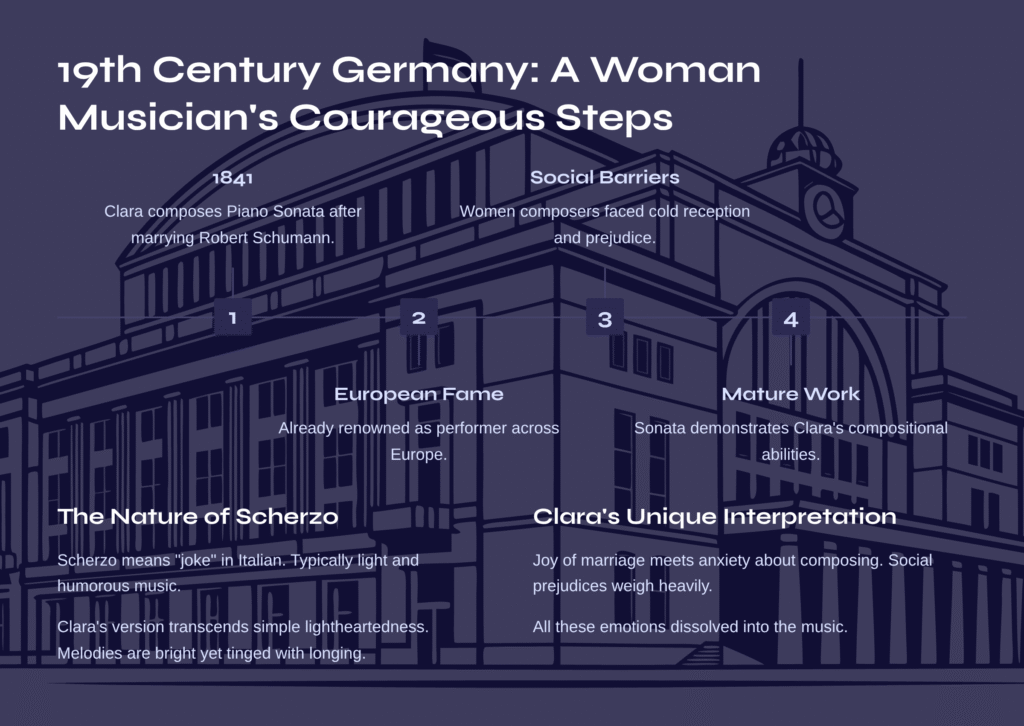
19th Century Germany: A Woman Musician’s Courageous Steps
Clara Schumann and the Birth of the Work
In 1841, when Clara Schumann composed this Piano Sonata, it was a particularly significant period in her life. She had recently married Robert Schumann and was already gaining fame across Europe as a performer. However, societal perceptions of women composers remained cold, and Clara herself lacked confidence in her abilities as a composer.
Born from these circumstances, the Piano Sonata in G minor stands as one of the important works demonstrating Clara’s mature compositional abilities. The second movement Scherzo, in particular, can be considered the heart of the entire sonata. While faithfully following classical sonata form, she managed to infuse it with her own unique sensibility – a truly impressive achievement.
The Nature of Scherzo and Clara’s Unique Interpretation
Scherzo originally comes from the Italian word meaning “joke,” referring to music of a light, humorous character. However, Clara’s Scherzo possesses depths that transcend simple lightheartedness. The melodies unfolding over the 3/4 dance rhythm are sometimes bright and vivacious, yet sometimes tinged with longing.
These characteristics are not unrelated to the complex situation Clara found herself in at the time. The joy of a happy marriage alongside anxiety about herself as a composer, and the burden of having to confront social prejudices – all of these seem to have dissolved into this music.
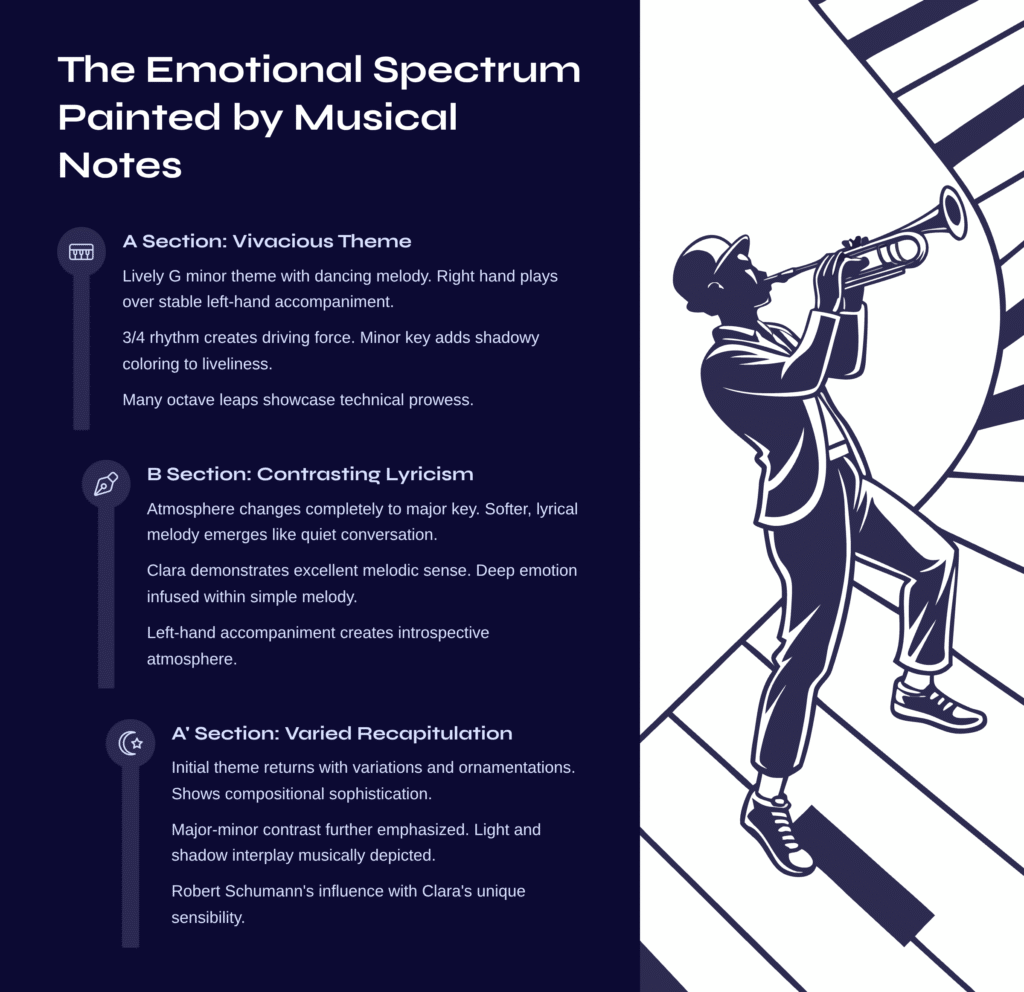
The Emotional Spectrum Painted by Musical Notes
A Section: Presentation of the Vivacious Theme
The Scherzo is constructed in typical ternary form (A-B-A’). In the first A section, a lively theme in G minor is presented. The right hand plays a dancing melody over the left hand’s stable accompaniment, and what’s particularly noteworthy here is the vitality of the rhythm.
The driving force created by the 3/4 scherzo rhythm naturally makes listeners want to move their bodies. However, because of the shadowy coloring that the minor key provides, this liveliness feels less like pure joy and more like laughter tinged with melancholy.
This section, featuring many octave leaps, demands considerable technical challenge from the performer. Since Clara herself was an accomplished pianist, she seems to have composed it to clearly showcase the performer’s technical prowess.
B Section: Contrasting Lyricism
In the middle B section, the atmosphere changes completely. The key shifts to major, and a much softer, more lyrical melody emerges. This section feels like taking a brief rest from dancing to have a quiet conversation with your partner.
Here, Clara demonstrates her excellent sense of melody. Though the melody appears simple, deep emotion is infused within it. The left-hand accompaniment is also processed much more softly and flexibly than in the A section, creating an overall introspective and contemplative atmosphere.
Such contrast is an important element showing Clara’s musical maturity. Rather than simply pursuing technical brilliance, there’s a clear intention to express various emotional layers through music.
A’ Section: Varied Recapitulation and Climax
In the final A’ section, the initial theme returns, but not as a mere repetition – it appears in new forms through various variations and ornamentations. In this section, Clara displays the sophistication of her compositional technique.
Particularly noteworthy is how the contrast between major and minor is further emphasized. It’s as if she’s musically depicting the complex emotions created by the interplay of light and shadow. This treatment appears to be influenced by Robert Schumann, but Clara’s unique sensibility is clearly added to it.
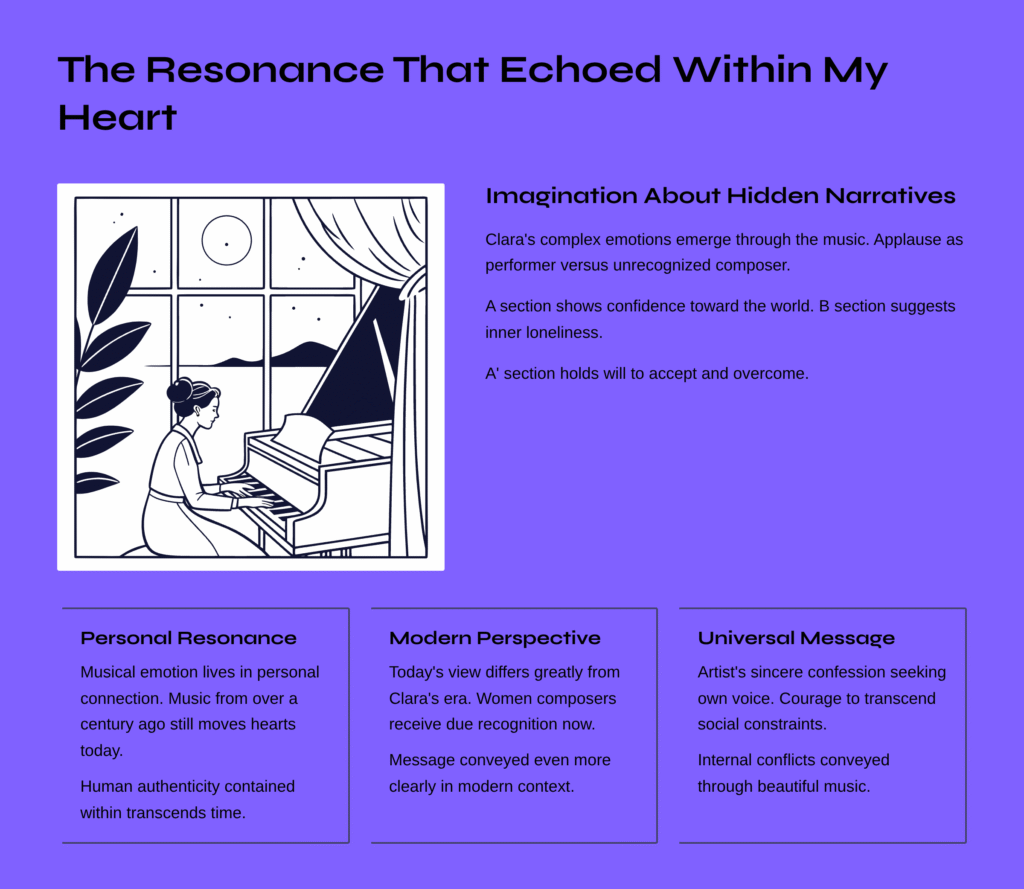
The Resonance That Echoed Within My Heart
Imagination About Hidden Narratives
While listening to this Scherzo, I often find myself imagining Clara’s inner world. The complex emotions she must have felt between the applause she received on stage as an accomplished performer and the reality of not being recognized as a composer. This music seems to be the musical voice of exactly those emotions.
The lightheartedness of the A section seems to contain a confident attitude toward the world, the lyricism of the B section suggests inner loneliness, and the varied recapitulation of the A’ section appears to hold the will to accept and overcome all of it.
Such interpretation might be excessive emotional projection, but I believe the essence of musical emotion lies precisely in this kind of personal resonance. The reason music from over a century ago can still move our hearts today is because of the human authenticity contained within it.
Rediscovery from a Modern Perspective
Today, our perspective on this work is quite different from Clara’s era. Perceptions of women composers have greatly improved, and Clara’s works are receiving their due recognition. But precisely because of this, the message this music conveys can be heard even more clearly.
The sincere confession of an artist who strived to find her own voice, the courage to transcend social constraints, and the internal conflicts felt in that process – all of these are being conveyed to us in the form of beautiful music.

Practical Advice for Deeper Appreciation
Comparative Listening of Different Performances
To properly understand this Scherzo, it’s beneficial to compare interpretations by various performers. The performers I’d like to recommend are as follows:
Clara Haskil’s performance is renowned for its transparent and classical interpretation. Rather than showing off technique, her style emphasizes the formal beauty and structural elegance of the music. The balance between voices is particularly excellent, and she clearly brings out the characteristic rhythm of the Scherzo.
Maria João Pires’ performance is distinguished by its emotional expressiveness. With a wide dynamic spectrum, she provides deep emotion particularly in the lyrical B section. She shows remarkable ability in musically depicting Clara’s internal conflicts.
Nicolas Hodges’ performance approaches the work from a modern perspective. With excellent sonic balance and high technical achievement that never becomes excessive, his restrained expression is impressive.
Analytical Listening with the Score
If possible, I recommend obtaining the score from IMSLP and following along with the music. You can visually confirm Clara’s delicate compositional techniques and understand the contrasts and variation techniques of each section more clearly.
Parts to pay special attention to:
– The rhythmic interaction between right and left hands in the A section
– The key changes and melodic flow in the B section
– The thematic variations and ornamental techniques in the A’ section
Effective Methods for Repeated Listening
Since this Scherzo is a short piece, it’s well-suited for repeated listening. The first time, grasp the overall flow, and from the second listening onward, focus on each section individually.
It would be particularly interesting to listen while comparing the differences between the A and A’ sections. Observe how the same theme is differently varied and developed.
Pay attention to pedaling and touch as well. It’s important to feel the contrast between the clear articulation characteristic of scherzo and the soft legato of the B section.
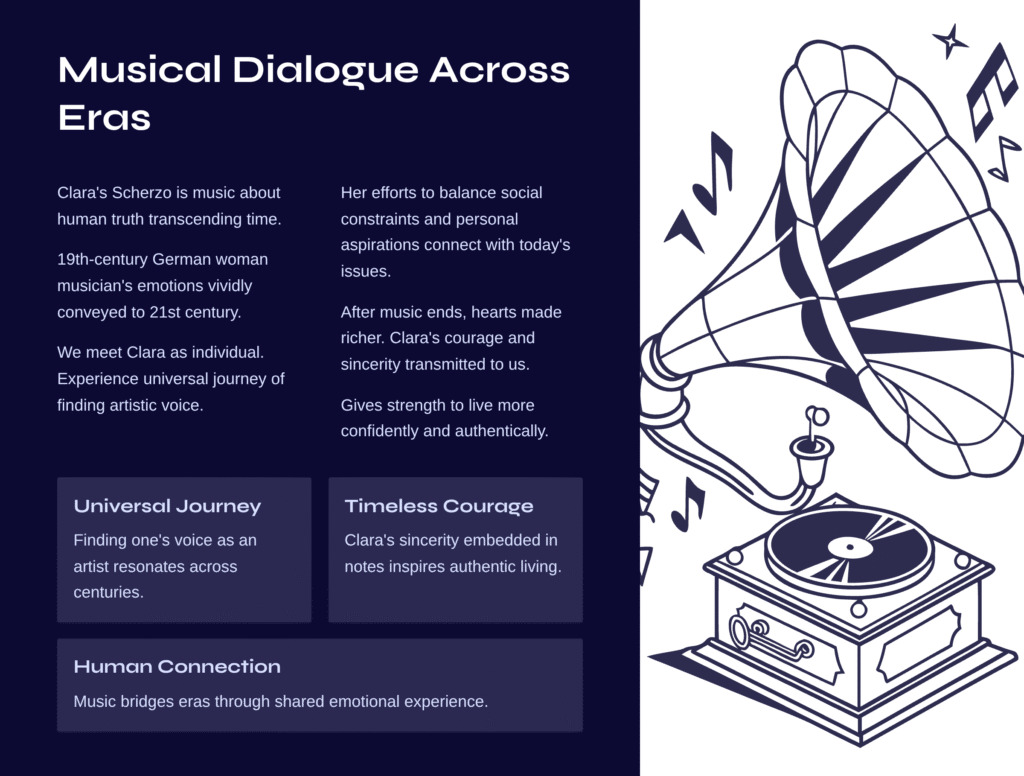
Musical Dialogue Across Eras
Clara Schumann’s Piano Sonata in G minor, second movement Scherzo, is ultimately music about human truth that transcends time. The emotions felt by a 19th-century German woman musician are still vividly conveyed to us living in the 21st century.
Through this work, we not only meet Clara as an individual but also experience together the universal journey of finding one’s own voice as an artist. Her efforts to find balance between social constraints and personal aspirations connect with many issues we face today.
After the music ends, we return to reality with hearts made a little richer. The courage and sincerity that Clara embedded in her notes are transmitted to us too, giving us strength to live more confidently and authentically in our own lives.
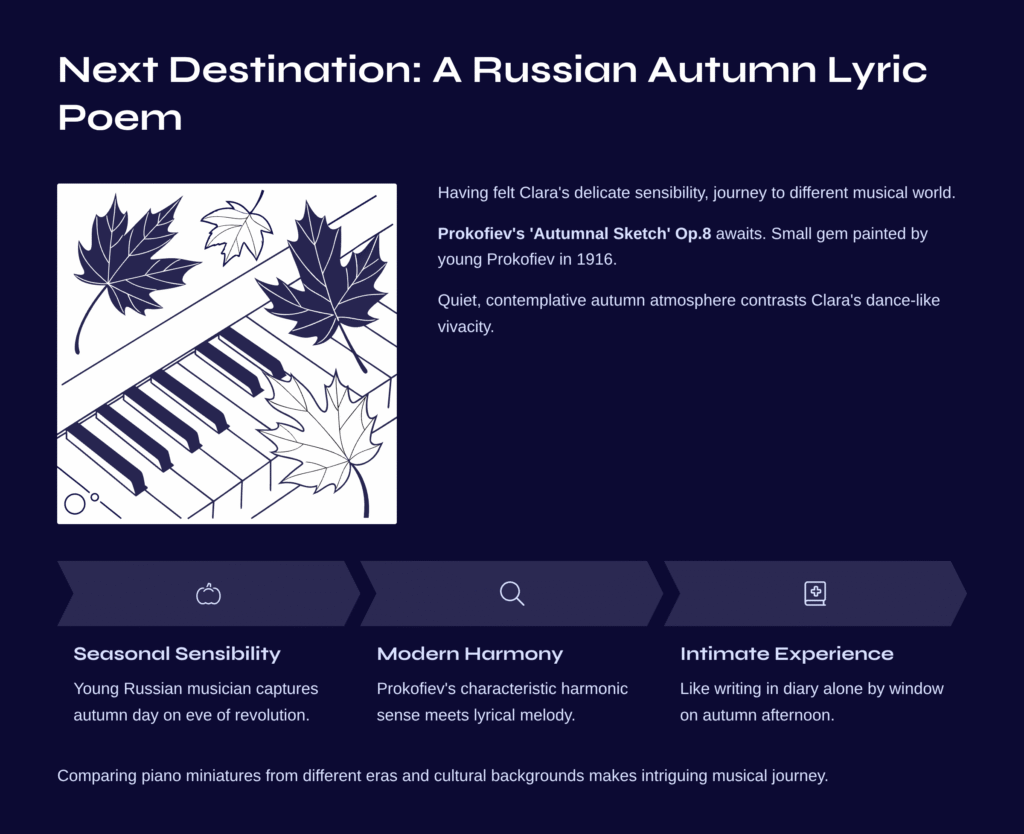
Next Destination: A Russian Autumn Lyric Poem
Having felt Clara Schumann’s delicate sensibility, how about journeying to a completely different musical world?
I recommend Prokofiev’s ‘Autumnal Sketch’ Op.8. This small gem of a work, painted by young Prokofiev in 1916, contains the quiet, contemplative atmosphere of an autumn day, in contrast to Clara’s dance-like vivacity.
The seasonal sensibility captured by a young Russian musician on the eve of revolution possesses a different charm from the inner confession of a 19th-century German woman composer. Experience the unique beauty created when Prokofiev’s characteristic modern harmonic sense meets lyrical melody. It will provide an intimate, personal musical experience, like writing in a diary alone by the window on an autumn afternoon.
Comparing piano miniatures born from different eras and different cultural backgrounds of these two composers would also make for an intriguing musical journey.
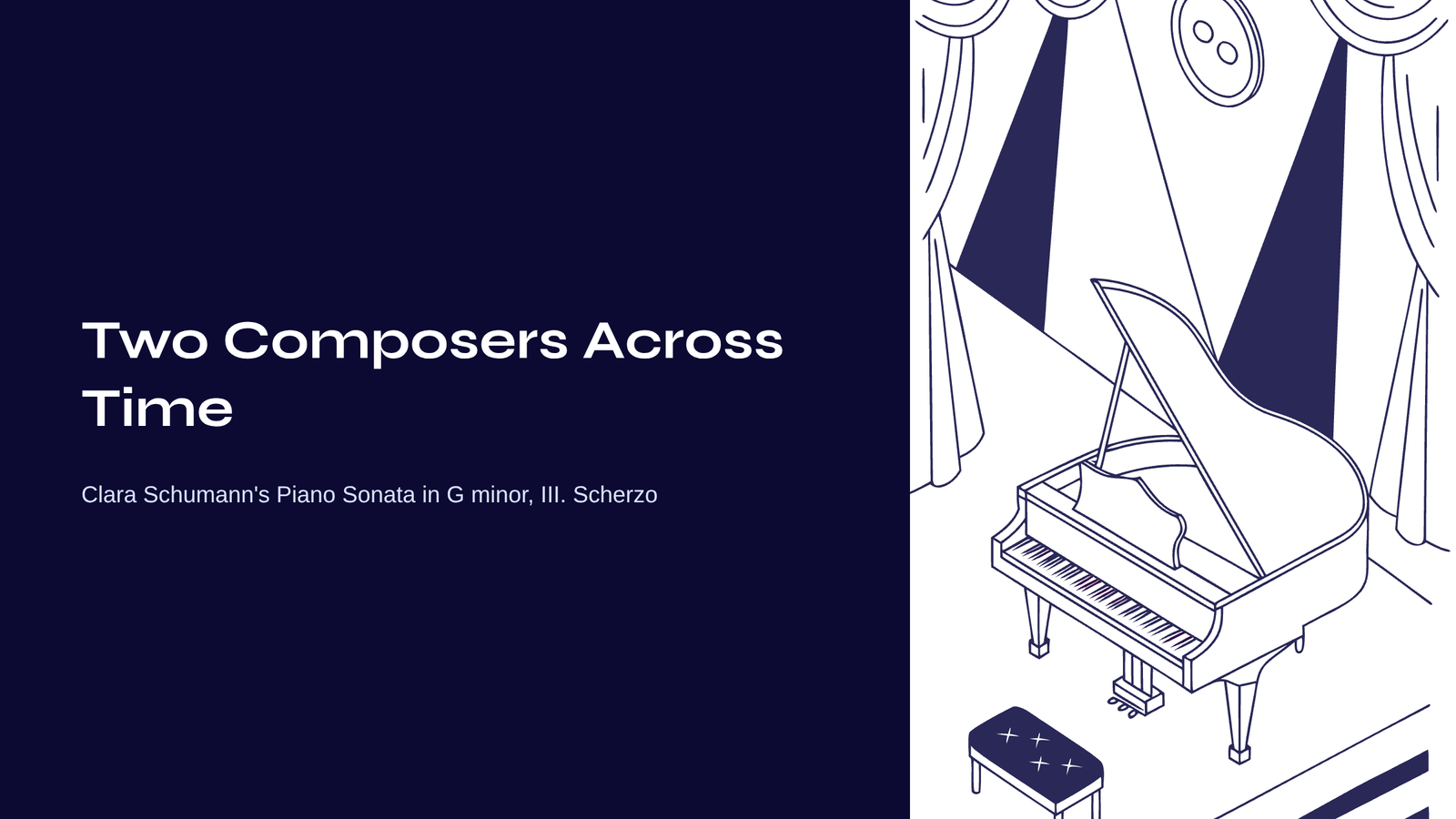


![Read more about the article Air Cooled CPU vs Water Cooled CPU: Choose the right cooling system for PCs out of 2 [Part.1]](https://rvmden.com/wp-content/uploads/2024/01/Air-Cooled-CPU-vs-300x169.png)